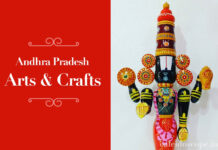Indian cuisine reflects an 8,000-year history of various groups and cultures interacting with the Indian subcontinent, leading to diversity of flavours and regional cuisines found in modern-day India.
Later, trade with British and Portuguese influence added to the already diverse Indian cuisine. Early diet in India mainly consisted of legumes, vegetables, fruits, grains, dairy products, and honey.
Staple foods today include a variety of lentils, whole-wheat flour, rice, and pearl millet, which has been cultivated in the India since 6200 BC. Over the time, segments of the population embraced vegan food habits with a supporting climate which allowed variety of fruits, vegetables, and grains to be grown throughout the year.
The Indian youth today is fond of the western delicacies such as Burgers, pizzas, colas and fries, when we have a sandwich we’ll get some peppy seasoning on it and some fancy sauces on our salad. We can hardly differentiate between Penne Arabiata, Basil sauce Spaghetti, Fettuccine, Lasagne, Fusilli or Macaroni when it comes to pasta, however It all more or less boils down to a similar taste although they look really different.
But when we experiment with Indian cuisine, we’ll get some healthy and tasty foods which we can easily make from Dosa – bhatura to Sambar – Chole, from Rice – Roti to Dhokla – Samosa, these are just a few examples.
Just imagine if we tie a band around our eyes and we lose our ability to see. Yet when we feed our morsels of Indian cuisine, we can easily distinguish most of the dishes.
Cuisines get changes across India’s regions as a result of variation in local culture, geographical location, vegetation and economy. It also varies seasonally, depending on which fruits and vegetables are ripe and available.
* In North India chilies, saffron, milk, yoghurt, cottage cheese and ghee are favourites.
* In South India people adds pepper, tamarind and coconut and will often even cook in coconut oil.
* In East India people prefer all foods mostly made with mustard and fish.
* In West India people have a sweeter tooth and same resembles in their foods as well.
India was traditionally a vegetarian country during the Vedic Age. But gradually as invaders came in and due to growing foreign influence, Indians developed a taste for non- vegetarian food. One of the many reasons why Indians love seafood particularly is its vast coastline. An Indian meal is a proper five-course meal. Indian homes are known for their hospitality and the congeniality commences with a beverage that is offered as an aperitif before serving the meal.
Appetizers in India
The beverages such as Punjabi Lassi, Gujarati Chas and the Konkani Kokum Sherbets are mostly consumed before or with the meals. Post which a plateful of two courses, starters and the main course gets consumed.
Regional food specialities
If we are in a Northern part of India, be prepared to get our stomachs fully loaded, our trencher will be full of Kebabs, Kachori, Chaats, Sindhi Kadhi, pakoras, kormas, paneer delicacies, kulchas, naans and Chole Chana. North Indians also have this peculiar affinity for Parathas, but that is the staple breakfast for most of them.
If we’re in tropical Southern part of India, we will be served our meals on a banana or a plantain leaf. In South India people believe that the shape of the banana leaf resembles the human tongue and the foods are placed in such a way on the leaf so as to suit the taste buds. Southern India is very well known for its healthy and light Idly, dosa, uthappam and appams. We also get mouth-watering curries here specifically named as ‘vindaloo’ in Goa. Vindaloo is an extremely spicy Indian curry and the highlight food item of South India the Hyderabadi Dum Biryani which is one of the most popular Indian food item across the globe.
If We’re in Western part of India be prepared to have something sweet as well as salty at the same time, starting from Gujrathi food items Dhokla, Dal Dhokli, the Undhiya in the winters, the fresh mango pulp in the summers, the vegetable handwa, sweetened dal with different combinations of vegetables. Well, when we move to Rajasthan where ‘Dal baati’ is the signature food item to try for and Maharashtra which is home to some appetizing Aamti dal and Sol Kadhi and the famous vada pav – batata wada.
Now if we look into an Eastern part of India, we find fish and rice in most of their kitchens and plates. Referring to Bengali cuisine which is the only traditionally developed multi-course tradition from the India which is resembling to the modern service style of French cuisine with food served course wise rather than all at once. They have a great emphasis on vegetables and lentils in their food. There are certain accompaniments which are served to add more flavour to their meals the traditional Papad which is roasted and crunchy to bite.
Indian Food Accompaniments
A wide range and type of Chutneys and homemade pickles are prepared during summers and preserved and consumed throughout the year across the country. Then there is a Raita, which is made out of boondi and sweetened curd with many more variations. Indians usually have Pan (beetle leaf stuffed with some natural mouth fresheners) after our meals to get some freshness and it also helps in digestion.
Sweets of India
Now let’s the Indian sweets get some eyes on, Right from Ras-Malai, Imarti, Halwa and Laddus in the North to the Paayasam, gulab jamun, Mysore Pak and khalakan in the South. Shrikhand, Sonpapdi and Kaju-Katli in the West to the Mishti Dhoi, Rassogullas and Sandesh in the East. Indian sweets are famous for its richness and amazing taste.
No wonder Indian restaurants do so well abroad, now we can believe on all authentic full Indian Maharaja Meal or a Chhappan Bhog is also an understatement. #KhabarLive #hydnews







